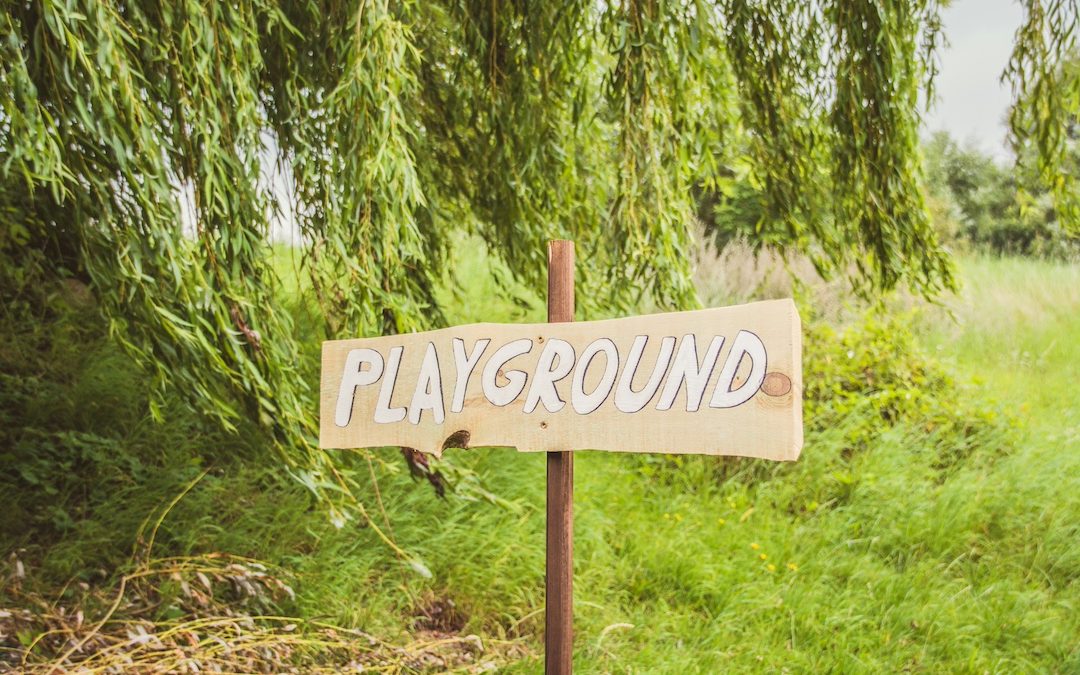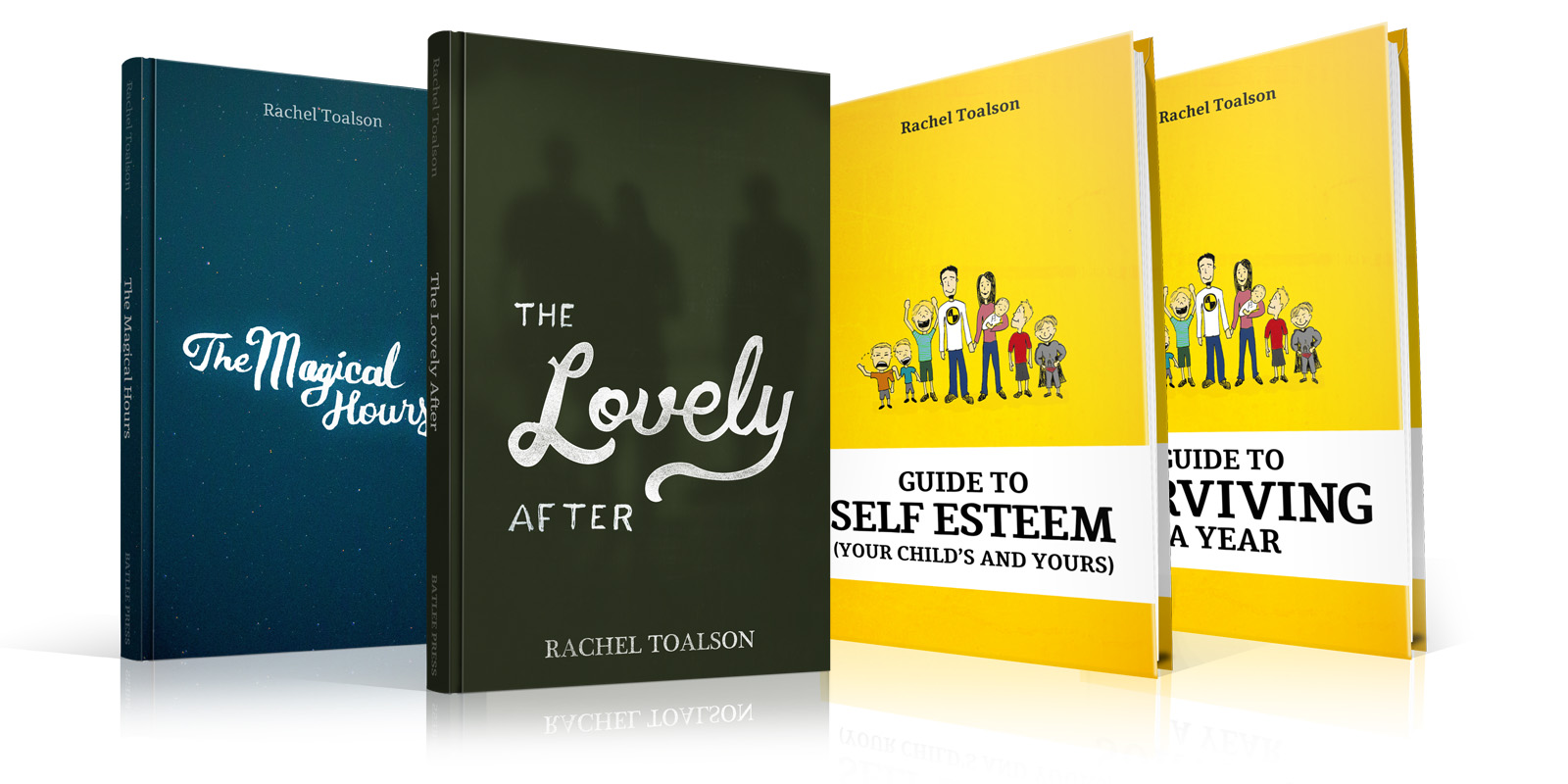
by Rachel Toalson | Books
Here are 5 (or 6) things worth sharing this week:
1. Reading (YA): “Couples that stim together stay together.” I loved loved loved Tilly in Technicolor, by Mazey Eddings. It’s about a young woman, Tilly, who has ADHD, and a young man, Oliver, who has autism. Though they are wildly different, they fall in love. So much of it reminded me of my husband and me (except with the neurodivergence reversed) that I made my husband read it. It’ll make you laugh, swoon, and probably get a little teary-eyed now and then. Highly recommended. This is the first of Eddings’s books I’ve read, though she has other romances, including Lizzie Blake’s Best Mistake and A Brush with Love.
2. Reading (MG): I just finished Jenn Reese’s latest book, Every Bird a Prince, and wow, was it spectacular. I love Reese’s speculative fiction (she’s the author of A Game of Fox & Squirrels, which I talked about a few newsletters back). This one features Eren Evers, who is confronting her greatest fears and also helping a collection of bird royalty save the forest kingdom. I loved all the references to fear and how to have courage. It was so beautifully told. I can’t wait for her next book, Puzzleheart, which releases May 14.
3. Reading (Adult NF): “History is a merciless judge. It lays bare our tragic blunders and foolish missteps and exposes our most intimate secrets, wielding the power of hindsight like an arrogant detective who seems to know the end of the mystery from the outset.” When I first picked up Killers of the Flower Moon: The Osage Murders and the Birth of the FBI, by David Grann, I didn’t even realize it was a true story. Probably because I’d only seen the title on the Apple TV movie (which I have not yet watched), and I only picked it up because I have a deal with myself that I have to read books before I watch movies based on books. But it was so worth it. This story is fascinating and tragic and will make you burn with fury. I’m looking forward to watching the movie. Probably I’ll be watching it alone, since I’m the only person in my family who’s a sucker for movies based on true stories!
4. Watching: I just finished watching the docu-series The Super Models on Apple TV. This series follows Cindy Crawford, Linda Evangelista, Naomi Campbell, and Christy Turlington in their rise to become supermodels in the 1980s. I found it fascinating to watch about their challenges and also the ways they stomped through stereotypes of beautiful women. They are inspirational women; one of my favorite lines in the series was something Linda Evangelista says: “Youth is not sustainable. Beauty is.” I LOVED that! And now I’m gonna work on an adult story framed around that quote. 🙂
5. Reading (YA): If you’re looking for a fun, funny, heartwarming graphic novel, look no farther than Huda F Cares? by Huda Fahmy. (I mean, with a title like that, how could you not pick it up?) It was a National Book Award finalist this year, and it’s a story of Huda and her sisters and her family’s trip to Disney World. I’d pick it up just for the Disney World in it, but it was funny, heartwarming, and delightfully fun. Fahmy is also the author of Huda F Are You? As well as some graphic memoirs for adults. Check her out; you’ll be glad you did.
6. Reading (chapter books): I’m currently reading back through the Ramona series of chapter books, by Beverly Cleary, and I had forgotten how much I love Ramona (I just finished Ramona the Pest, and I’m pretty sure I was smiling through the whole thing). What a spunky little girl! Reading back through these, I can see why first-grade Rachel LOVED the Ramona books. Ramona is a girl who pushes all the limits. It’s been great fun to revisit her story and imagine what I might have been thinking as I read it all those years ago.

by Rachel Toalson | Wing Chair Musings
One of my goals for this year is to take off all the school holidays with my kids. It’s been my goal for several years, actually. But I always seem to find one reason or another not to do it.
My sons recently had a winter break, which gave them a five-day weekend. Not even a month later, they have Spring Break. And as Spring Break hurtles toward us, I find myself thinking, Maybe I can just do a few things. They just have so many days off! And I just spent three whole days with them!
There are so many days off…and there’s always so much to do.
I start with such good intentions. And then the work starts creeping into those days off. And before I know it, I’m right back where I was when I found myself thinking, These days aren’t gonna last forever. I really should enjoy them. I should take off all the holidays with the kids.
Round and round we go.
It’s very hard for me to just…do nothing. Part of it is my personality; I feel most comfortable keeping myself busy. Dividing up my time into segmented activities, even if one of those activities is rest. I write it on my calendar. It says, “Rest,” and usually has a time limit. How regimented, right?
Sometimes I think I need to learn how to chill. How does someone learn how to chill?
My kids can sit and chill out on their phones or relax watching a Netflix show or playing a video game (which is probably a little more productive than just watching something or phone scrolling) for hours. If I sit still for a few minutes, I start to feel itchy. My brain pitches a hundred other things I could be doing. And then I start thinking, I’m taking time off to hang out with my kids and they’re looking at their phones. Why am I even here?
My husband and I used to take my sons out on individual dates when they were younger. It gave us one-on-one time with each of them—precious in a house of so many. But even when we went out on dates, we had to be doing something or it didn’t feel productive.
Why am I like this?! I ask myself that many times a day.
Lollygagging is not a natural state of being for me.
Several people in my home have ADHD. Every Saturday morning we have family council meetings to talk about our schedules, issues in the family, and how each member is feeling. Do you know what meetings are like with people who have ADHD? My husband is one of them; every Sunday we have a budget meeting to go over finances. And sometimes it’s excruciating. Back when we were in a band there was so much downtime during rehearsals, when he’d chase rabbits down trails, that I started bringing a book with me so I could read in the gaps and at least make progress on my “To-be-read” shelf.
I like my time to feel productive. My time is meticulously scheduled, by choice; even days off have a bit of a routine. It’s unclear if that routine is part of my personality or a result of trauma. Routine feels like a form of control, and there’s so much of life that’s out of control.
I’d like to get better at lollygagging, though.
When my kids were young, they were really good at it. They’d waste so much time and I’d try to hurry them along. We had places to be, things to do. But I got better at it back then. They were good at teaching and challenging me.
Now things happen at the speed of light, so it feels like I have to do everything fast, right this minute, don’t waste any time. Maybe that’s also a result of getting older. You realize your time isn’t infinite. There are real consequences for what we choose to spend our time on.
My husband has been picking up music again; he asked me if I would be in a band with him again. I love music…but there’s only so much time, and I don’t know if I love it enough. So I told him maybe. If he can figure out how to practice efficiently, if I get all the details I need. It’s the same answer for the podcast he asked me to join him in starting up again.
The reality is I don’t have all the time in the world; none of us do. We can’t say yes to everything. We have to assess what we’ll trade and what we’ll give up and get really good at saying no.
That’s how we can slow down the speed of life, maybe get back to a little lollygagging…even if it makes us itchy.
The more we practice lollygagging the better at it we get.
Here are some of my favorite suggestions for slowing down the speed of life:
1. Learn to say no.
Every time I’m asked to do something I think: What will I have to give up to do this? And am I willing to give that up?
The reality is, we’ll always be giving something up, trading our time. It might be time with our kids or partner or progress on a work project or time to ourselves. But we can’t endlessly add without taking something away. I always try to keep that in mind and assess my priorities accordingly. It would be nice if we had endless time…but we don’t.
2. Embrace (or schedule downtime for) the unexpected.
The thing about a routine is it doesn’t leave much room for the unexpected. It’s good to be spontaneous; it keeps us fresh and on our toes. It can spark creativity.
Not everyone exists on a schedule. Plus: emergencies.
If you have to schedule your down time, do it. Lollygagging is good. I like time to just sit and think…or sit and do absolutely nothing. I overhear the funniest conversations when I actually take the time to do nothing.
3. Learn to lollygag.
This is the hardest part for me, as I’ve said. What is a moment if it’s not productive?
Sit. Be. Observe. Have a nothing conversation with your kids or your partner. Laugh, play a game, do some improv, do nothing that seems terribly productive. Forget about the to-do list. (I know…easier said than done. But I’ll try if you will.)
Our brains love this kind of open freedom, to just wander and turn over things.
Make no plans for a day and see how it turns out. And if you fail, try again. You’ll never really know if lollygagging works for you until you give it a good shot.

by Rachel Toalson | This Writer Life
When I visit schools to talk to elementary and middle school students, one of the most frequently asked questions I get from them is “How much money do you make?” I get some interesting variations—“Are you rich?” “Do you live in a big house?” And at the most recent visit—“What’s your net worth?”
Uh…none of your business?
I usually try to answer this “How much do you make” question diplomatically: Not as much as you think.
Readers often have an inflated idea of how much money authors make. Most of us don’t make a whole lot. There’s a popular myth about authors that says once they get a book published, they’re all set. Maybe we believe or believed that once, too.
I certainly did. At first. Before I learned the real story.
When my first book published, I thought everything would change. I wasn’t under the illusion that I’d be rich, but I thought maybe I’d start earning at least a steady income.
That was in 2018. Here we are, six years later, and I don’t make a steady income as an author—yet. It’s the yet, I think, that keeps writers going. The endless hope that something will change, this will be my year, this book will be the breakout.
Writing takes time and commitment. It’s not an easy job. Most of us who do it love it—and it’s that love for it that keeps us coming back to the blank page again and again and again. We want to do it for love. It’s our pleasure, maybe even our purpose (it certainly is mine).
And in a perfect world, we wouldn’t have to concern ourselves with money. But we don’t live in a perfect world, and we do have to concern ourselves with money. Which means, at a certain point, we need to make money at our writing, if we want this to be a feasible, long-lasting career. And for the majority of us, that won’t happen with book sales alone.
Here are some things I’ve learned along the way about writing for love and writing for money:
1. We have to treat our writing like a business.
While I would like to spend all day every day writing, there are business tasks I have to take care of for my business. Things like sending communication, creating marketing content, setting up book signings and public appearances.
Some of us might be able to hire someone to take care of those business tasks we don’t want to do. I’ve not gotten to the point of financial stability to do that—yet (there’s that word again). So I take care of them all myself. And even if someone else takes care of them for us, those business tasks remain, and we have to be aware of and delegate them.
Of course one of the most important things we can do is write the next book. But the next book won’t go anywhere if we don’t see to the business side of things.
2. There’s no reason we can’t write for both love and money.
Money isn’t bad, you know. I grew up in a spiritual tradition that taught me not to chase money, it was the root of all evil. It’s taken me decades to overcome that teaching.
Maybe as a result of that, I used to think writing just to make money was bad. But do you know what money does? It grants us the freedom to also write what we love. When we’re not constantly worried about money or how we’ll pay our bills, our minds are freed up to be creative. And more money gives us more resources with which to be generous.
I used to hate the thought of writing for money. Now I know the more books I sell, the more freedom I also have to write the books I love.
We might even surprise ourselves—the books we start out writing for money might become some of our favorite things to write. (What do I mean by writing books for money? Some genres sell much better than others—romance, for instance, or thrillers. Genres in top-selling categories can provide a good income for authors.)
3. Find other income streams.
Most of the authors I know have additional income streams. I do school visits, Webinars, ghostwriting, client work when needed. I’m a hybrid author, which means I publish traditionally and I also self-publish—because this is what I’m good at, and I need to make money at it. Self publishing allows me a wider income stream with multiple different formats—serialized stories, novels, shorts.
I also have an online store with hundreds of products. I have digital downloads and online course products and writing prompts I sell.
Our lives as writers can offer a lot to the world, and we can find all kinds of creative ways to supplement our income. And just because we have to supplement our income doesn’t mean we’re not “real” writers. Writers work hard and write and do whatever it takes to succeed at what we love.
We can do this for love. And we can do it for money, too. Both can exist at the same time.
I hope you have a glorious month of writing for love and money.

by Rachel Toalson | Books
Here are 5 (or 6) things worth sharing this week:
1. Reading (MG): I just finished Gravebooks, the sequel to Nightbooks, by J.A. White. It’s a scary story that also examines writing and all the frustrations that come along with the act of writing. The main character, Alex, is a writer of paranormal stories, and the books incorporate some o\f his stories throughout the narrative, which I LOVE. White is also the author of the Thickety series, which is a whole collection of spellbinding books.
2. Reading (Adult fiction): “It’s as though her life has shot forward while she was looking the other way, and there’s a grief in it that wrenches her soul.” Not much happens in Amazing Grace Adams, by Fran Littlewood—but that’s okay. You don’t read it for the action, you read it for the character. And Grace Adams is a character. I enjoyed this read from start to finish. So many relatable bits, and phrases that I wrote in my notebook that I’ve felt myself. Be sure to pay attention, though, the timeline jumps around a bit.
3. Reading (MG): Farther Than the Moon, by Lindsay Lackey, was a sweet read about brothers, differently abled people, and space. Houston Stewart goes to astronaut camp and has to leave behind his brother with cerebral palsy. He’s always promised his brother he’ll one day take him to space—and now he has to figure out if that’s possible…and how it might be. So very good! (Lackey is also the author of All the Impossible Things, which was great as well.)
4. Watching: If you haven’t yet watched the Breaking 2 documentary on Disney+, you must. It’s a documentary about the quest to break two hours in the marathon. There are three runners highlighted, one of them my hero, Eliud Kipchoge, who is a phenomenal runner and person. Even if you’re not a runner, you’ll be inspired.
5. Reading (YA): Helena Fox’s latest book, The Quiet and the Loud, is a lovely, emotional read. Fox’s prose reads like poetry, and the story of George, who is trying to find quiet in her loud life, is at times hilarious and tragic. I haven’t read many storytellers like Fox. Another of my favorites is her How it Feels to Float. Both of them are well worth the read.
6. Reading (Adult fiction): “How were you supposed to change—in ways both big and small—when your family was always there to remind you of exactly the person you apparently signed an ironclad contract to be?” I’ve been on a Taylor Jenkins Reid kick lately. I don’t know what it is about her books; she writes about the “rich and famous,” except they’re fictional people—but maybe based on real people? Her stories are fascinating and so relatable—even though I’ve never been rich or famous. In Malibu Rising, which I recently finished, I related to Nina, the oldest sister, who takes care of her siblings. It’s a great read. Two of my other favorites by Jenkins Reid are Daisy Jones and the Six and The Seven Husbands of Evelyn Hugo.

by Rachel Toalson | Wing Chair Musings
When my kids were young, we identified some family values and spent a few years examining them. It was a way for us to frame our family lives, a way of living with integrity. We chose values like listening well, embracing creativity, honoring all people, believing in ourselves and others, loving all people and creatures.
It’s important to me to live with integrity. So of course that was one of our values, too. But that’s a hard concept to teach kids. Integrity is not just honesty, it’s also being who we are. Living from our values.
It’s not easy to be who we are all the time. Some days we feel grumpy, some days we feel sad, some days we carry a thousand hurts.
Living with integrity, to me, means asking the best of ourselves and others. Not asking perfection, but asking the best we have to give today.
Every day is different, right? Some days I think, I’m not sure I gave it my all today. I could have done better. That’s why we can’t expect perfection.
Integrity also means carrying our values and the things that are important to us into every part of our lives—work, relationships, play. Meryl Streep says, “Integrate what you believe in every single area of your life. Take your heart to work and ask the most and best of everybody else, too.”
Take your heart to work—that’s my favorite part. Because taking our hearts to work is integrity. Carrying our hearts everywhere, living from that wellspring of light and life and love—that is being who we are. Choosing to live with integrity.
One of my personal values is honesty. I believe we shouldn’t make promises we can’t keep. Part of that springs from my experiences as a child—I had to sort through all kinds of empty promises, and sometimes I believed them. The disappointment of an unkept promise forged this value. It makes me hesitant to promise anything to my kids that I can’t absolutely deliver.
I carry that everywhere. And sometimes it causes tension in relationships, because not everyone feels the same about promises. For some, they’re no big deal. Just words. I get that. I have to adjust my expectations of other people sometimes, because not all of us share the same values. We can’t possibly—we’re different people with different backgrounds and experiences. That’s okay. We all have different things that are important to us, different things we believe.
Another value for my family is love. I believe we should treat everyone with love, regardless of who they are or what they believe or how they live. That’s one I don’t let slide—I ask the most and best of myself and everyone else around me. I carry my heart to work and to meetings with friends and gatherings with my family and out into the world. I try to love the best I can.
Of course I don’t always succeed. I’m an imperfect human—not always generous, not always kind and compassionate (at least in my thoughts…I try to be kind and compassionate in my speech and actions, or I take myself on a break).
When we carry our hearts everywhere we go and we incorporate what we believe into all areas of our lives, we shine. We live with integrity.
I hope you have a radiant month of living with integrity.
How to live with integrity—and ask the most and best of yourself and everyone else:
1. Know what you believe
We can’t bring what we believe into all areas of our lives if we don’t even know what we believe. Spend some times connecting with your beliefs. Schedule some time to sit down and assess the things that matter to you. Honesty? Listening well? Encouraging others? Generosity? Gratitude? Love?
Conversations help. Facilitate some discussions with your friends or your partner or other family members. Write down some values that stick out to you. Think, If I wanted to leave a legacy, what would it be?
2. Find places in your life to incorporate your values more intentionally.
When my family and I were discussing our values, we came up with some specific actions for each value. Things like writing each other love notes. Sharing one gratitude around the table every night. Doing one generous thing for each other or someone else every week. Specific actions help us incorporate our values into our daily lives.
Make a habit chart. Reward yourself for acting with integrity. Do it with someone else so you can share your progress.
Or journal about it. I journaled about our family value journey. Keeping a record of your values can help you adjust and refine, which means it’s more likely you’ll keep living with integrity.
3. Remember today is today.
Wait. What do I mean by that?
Doing your best work, being the best version of yourself, is living with integrity. But we won’t be able to do it all the time. Sometimes we forget who we are. But values and beliefs give us an important framework to get back to. Living with integrity is also calling it like it is—this will not be easy. We may live with integrity today but miss the mark by a long shot tomorrow. Today is today. Tomorrow is…whatever comes.
Also, we’ll grow and change. We’ll refine our values. We’ll evolve. We don’t leave room for that if we expect perfection.






